Creality Ender 3
Some readers might be wondering why we’re reviewing this product now, since it launched in the middle of summer. Our logic in covering it now is that what’s delivered in the box today isn’t what first adopters received – the product has been tweaked with their feedback since.
Creality is one of a few companies in the 3D printer arena which works this way, and while we don’t generally agree with getting customers to find engineering faults, it hasn’t made the firm’s products any less popular.
Therefore the Ender 3 that we are reviewing is at least the third major iteration of this design, revised entirely based on end-user feedback; and it probably won’t be the last update.
So what makes the Ender 3 special, and is it any more amazing since the early customers pointed out how to make it better?
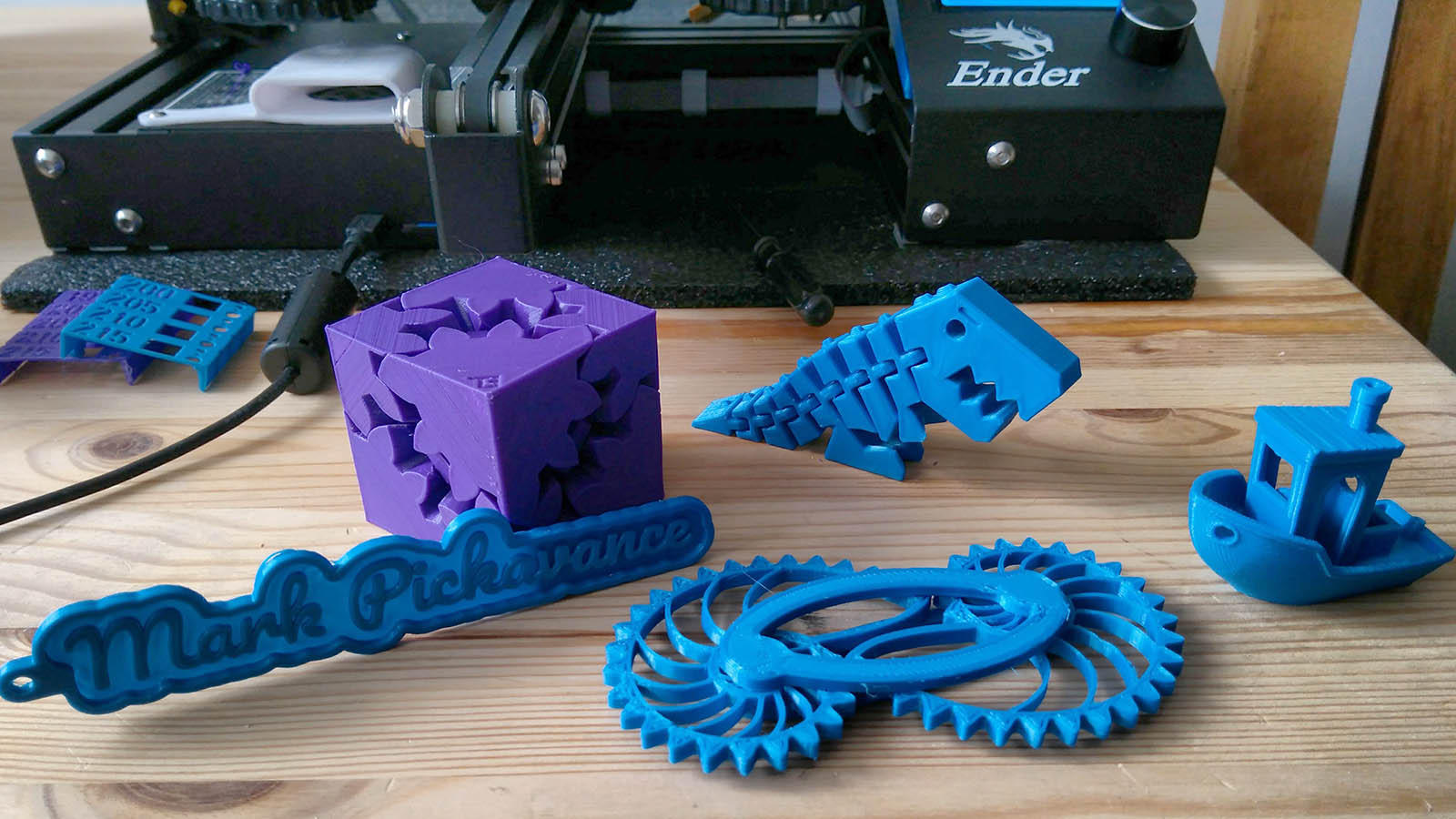
Price and value
The price of the Ender 3 compares very favorably with others in the Creality range, being not much more than the smaller Ender 2, and 60% of the price of the larger CR-10.
The Amazon UK cost is £196.99, and in the US it can be bought for $239 at Amazon.com. However, we did find it even cheaper elsewhere, priced at as little as £160 ($208) delivered.
The immediate commercial success of this hardware has spawned some clones, so make sure that what you are buying was definitely made by Creality, and not somebody else cashing in on the company’s success.
Compared with the cheapest Ultimaker or Prusa designs with this scale of build plate, there are very few serious alternatives. And they’re generally more expensive, often more than twice as dear, in fact.
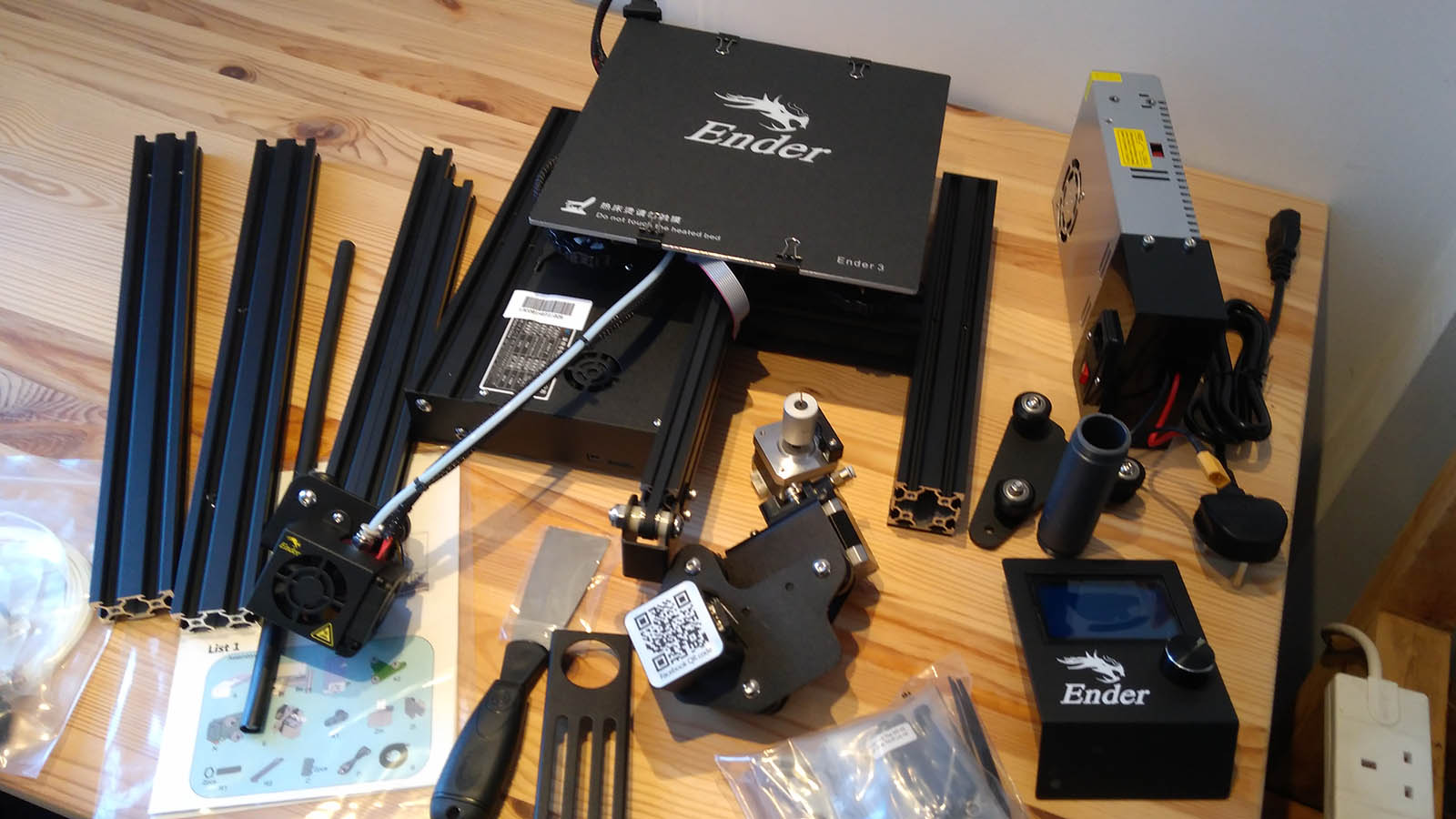
Design
For those unfamiliar with this design, the Ender 3 is an FDM (Fused Deposition Modelling) 3D printer that comes with a 0.4mm nozzle and can extrude a variety of 1.75mm plastic filament.
For such an inexpensive device it comes with a sizeable printer area of 220 x 220 x 250mm, allowing you to make substantial objects if you have the patience to wait for them to be finished.
The minimum layer height of 100 microns allows for some very detailed models to be printed, and the process can be controlled by PC over USB, or from G-code files stored on a microSD card.
Most 3D printers are either fully constructed or come as a kit, but the Ender 3 arrives somewhere in the middle.
The most complicated parts, like the hot end and the base, are pre-assembled. However, you do need to finish the frame, add the PSU, mount the Y axis and complete the electronics cabling.
Assembly is shown on a large color instruction sheet that breaks down the process into 12 relatively straightforward stages.
If you’re pedantic and like to check everything as you go it could take two hours, or if (like us) you jump in with both feet, around 45 minutes. After the build is complete, it’s worth taking a little time to make sure everything is square, and can move in all directions smoothly.
Creality provides a full toolkit for the printer, including a Hex key set, a couple of small spanners, a screwdriver and even some modelling snips. You won’t need any additional tools, and the firm also provides at least one extra bolt or nut of all those you might require.
In addition to the tools and spares is an 8GB microSD card with documentation, software and demo files. Creality even throws in a microSD card to USB adapter.
If you are wondering if the generosity of Creality has a limit, it does, and this shows in the tiny sample amount of bundled filament. At just 15g, this isn’t enough to print much of anything, and not enough for the demo G-code files of a dog that can be found on the microSD card.
As 3D printer designs go, the Ender 3 is a reworking of the same concept that Creality developed with the previous Ender models and the CR-10 series machines. It differs from typical Prusa style designs in only having a single Z-axis helical shaft, relying instead on angled bearings to keep the horizontal support arm at 90 degrees to the vertical.
Many have commented that this solution could cause variations in the Z positioning of the X-axis the further from the pivot point it travels, but the stiffness of the frame works to counter this.
Another cost reduction exercise is found on the extruder, which employs a Bowden design. Early Ender 3 owners complained that the connector at the hot end would push the flexible tube out, due to friction, causing a head blockage. This issue seems fixed in the current release, and for good measure spare connectors are provided in the parts, and even a spare extruder head.
So what are the still existing technical weaknesses here? There are a few we need to mention.
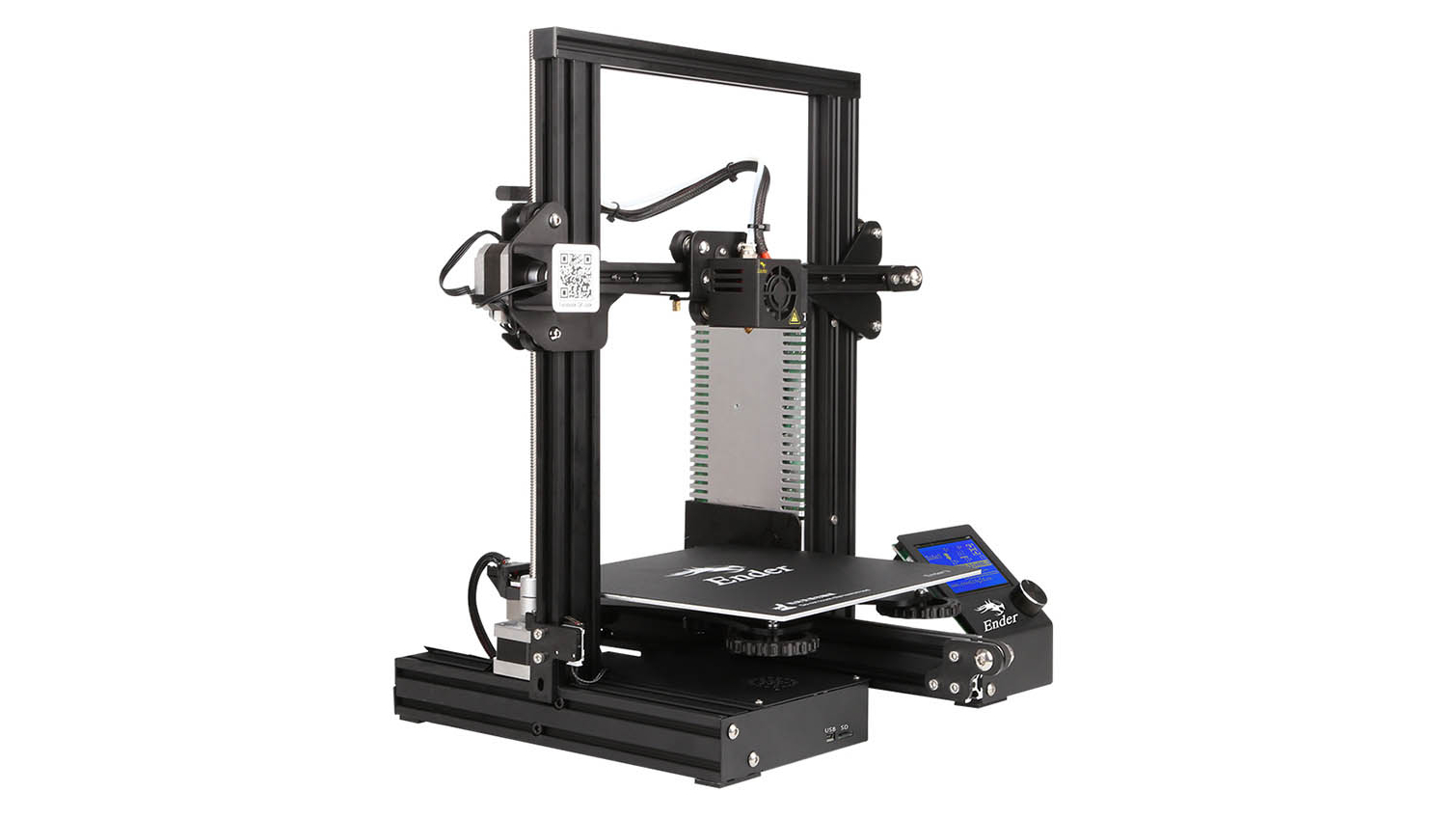
Public beta testing
A problem in early models of the Ender 3 which still hasn’t been fixed is that the Z-axis threaded rod is not entirely vertical, because the stepper motor at the bottom is not directly under the bushing it goes through to connect it to the X-axis beam.
The fix, and probably the first item you should download and print from the Thingiverse website, is a simple shim. This spacer moves the stepper motor out marginally, and without this minor modification, you can experience binding on Z-axis travel.
The placement of the microSD card slot isn’t ideal, and a normal specification SD card reader would have been a better option.
But the problem with the Ender 3 which caused us the most headaches was one that confronts most people trying to print in 3D – bed levelling. Designs like the Prusa i3, and its clones, have automatic bed levelling, and it won’t take long to envy those with that feature.
It is possible with some technical skills to add bed levelling with products like the BLTouch, and for those with a bed that isn’t entirely flat, that’s worth serious consideration.
Once we’d got the machine dialled-in, and it took us a few tries, we were able to produce a good first layer time after time.
Models are extruded on to a Buildtak-like bed surface that was glued down on the first machines, and is now (thankfully) detachable. The sheet is thin enough that you can flex it, popping off prints easily. The additional advantage of its removability is that you could replace it with glass if you prefer printing on that surface.
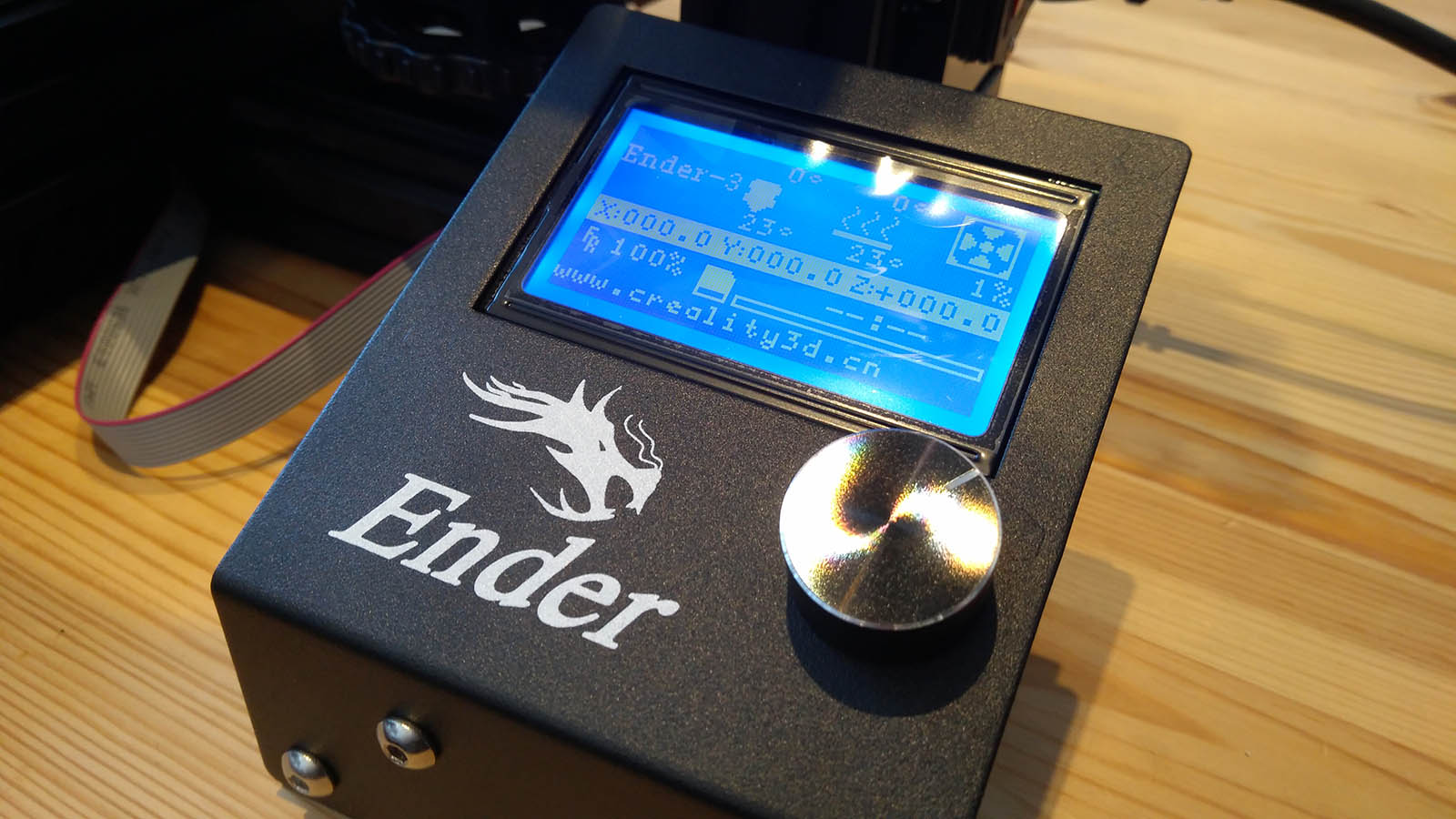
Creality quotes a build area of 220 x 220 x 250mm, allowing for some impressively sized objects to be constructed on it. The build plate is slightly bigger, at 235mm square, so if you are careful you could stretch this workspace to 230mm in the X and Y, should you need that extra bit of space. We printed out on the edge of the build area and had no issues with the bed perfectly level.
Overall, aside from the Z-axis stepper motor’s position, it appears that Creality has fixed most of the other niggles that early adopters reported. Any issues left are mostly minor ones, and are things that – probably unintentionally – happen to be good 3D printing projects to help a beginner understand the process.
And there certainly is plenty to learn for anyone starting out in 3D printing for the first time.
Within days of getting our machine, it was adorned with all manner of printed accessories, including a tool tray, filament guide, and a nice box to cover the rear of the display.
Software support
Provided with the printer is slicing application Cura 3.0.2, but you can get a more current version – Cura 3.4.1 – as a free download online. This software can interface with the Ender 3 via USB, or be used to output G-code to the microSD card for printing without a computer.
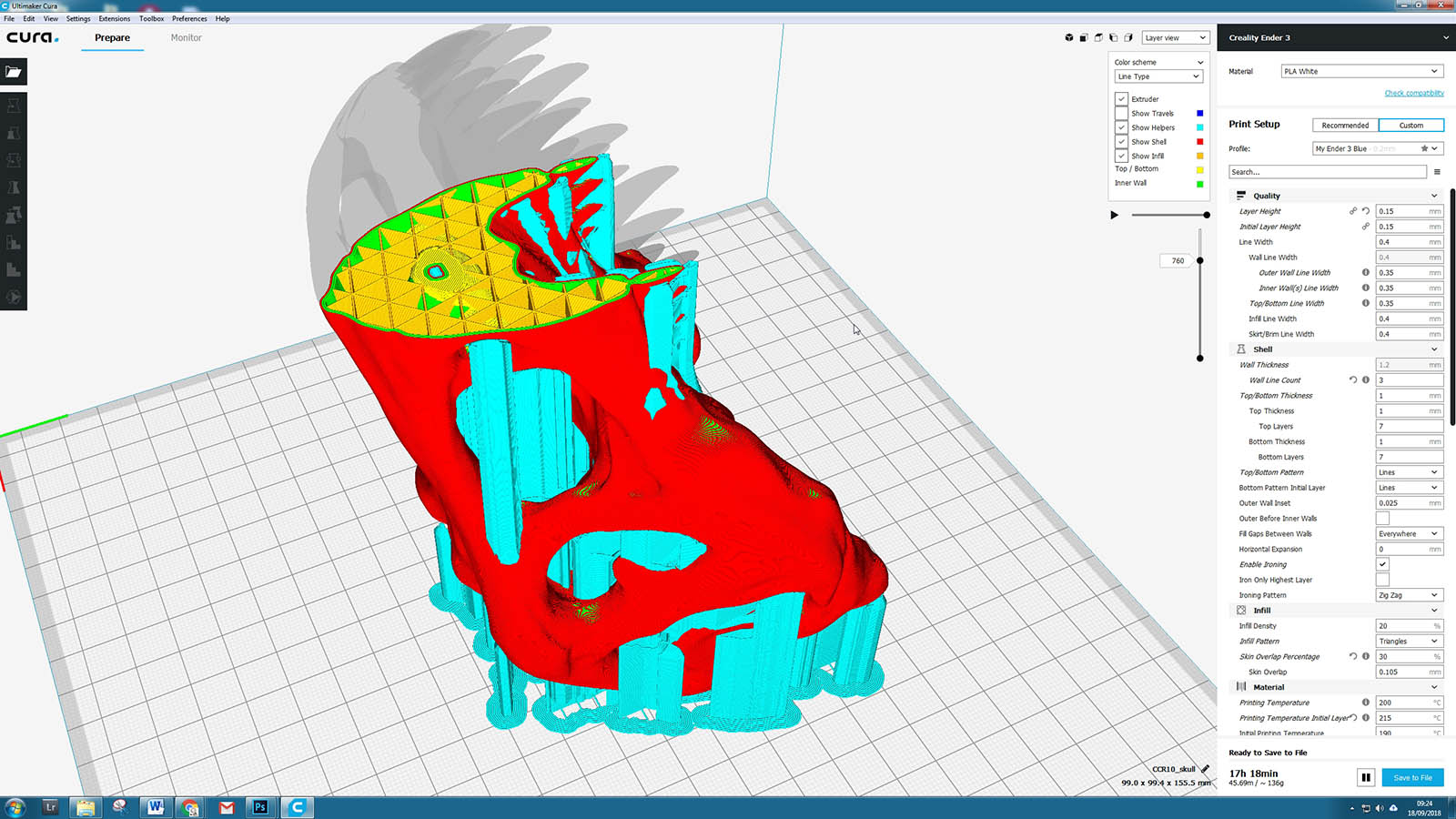
Printing from the PC does have the advantage that you can send extra G-code and monitor temperatures from there, but the machine can’t enter sleep mode for the entire print sequence.
For those who want the ultimate configuration, a Raspberry Pi Model 3+ with OctoPrint can connect via the USB port instead of a PC. The Pi can drive the printer, and be accessible over Wi-Fi for control and progress information. Plus you can even hook up a USB camera to give you enough visual feedback to abort any failure before things get super-messy.
There are other slicers available, and once you’ve created a printer profile for the Ender 3, it should work as intended.
The fact that there isn’t a default profile in Cura is understandable, given that it was created by another 3D printer maker, Ultimaker.
If you want to design models yourself, there’s a selection of free tools for you to download or use online. We experimented with Sketchup, Autodesk Meshmixer and Fusion 360 (trial version) to create models and then output them in the STL format that Cura can accept for G-code creation.
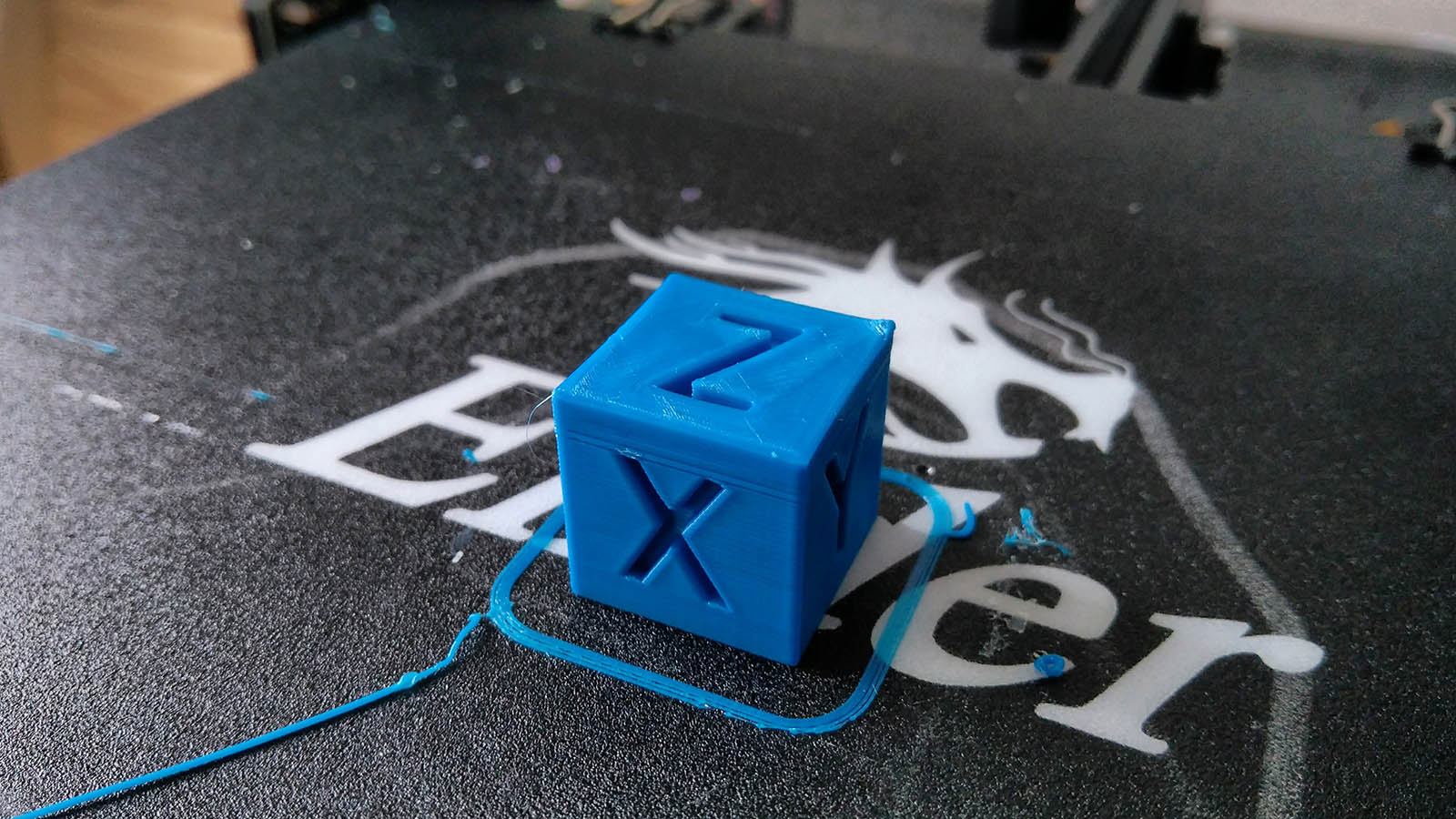
Performance
The speed of printing anything in 3D is dictated by the settings used, and that in turn directly impacts on the quality of the output.
Using a draft 0.2mm layer height profile that we created for the Ultimaker Cura with a print speed of 50 mm/s, the results we got were excellent.
Our XYZ 20mm test cube test took 42 minutes, and it was within 1% dimensional accuracy in all directions. That suggests that with minor tweaks you could make connecting objects within very workable tolerances using this printer.
Compared with other 3D printers around this price point, or even ones costing double this, that’s ‘fast’ – and the quality demonstrated is exceptional.
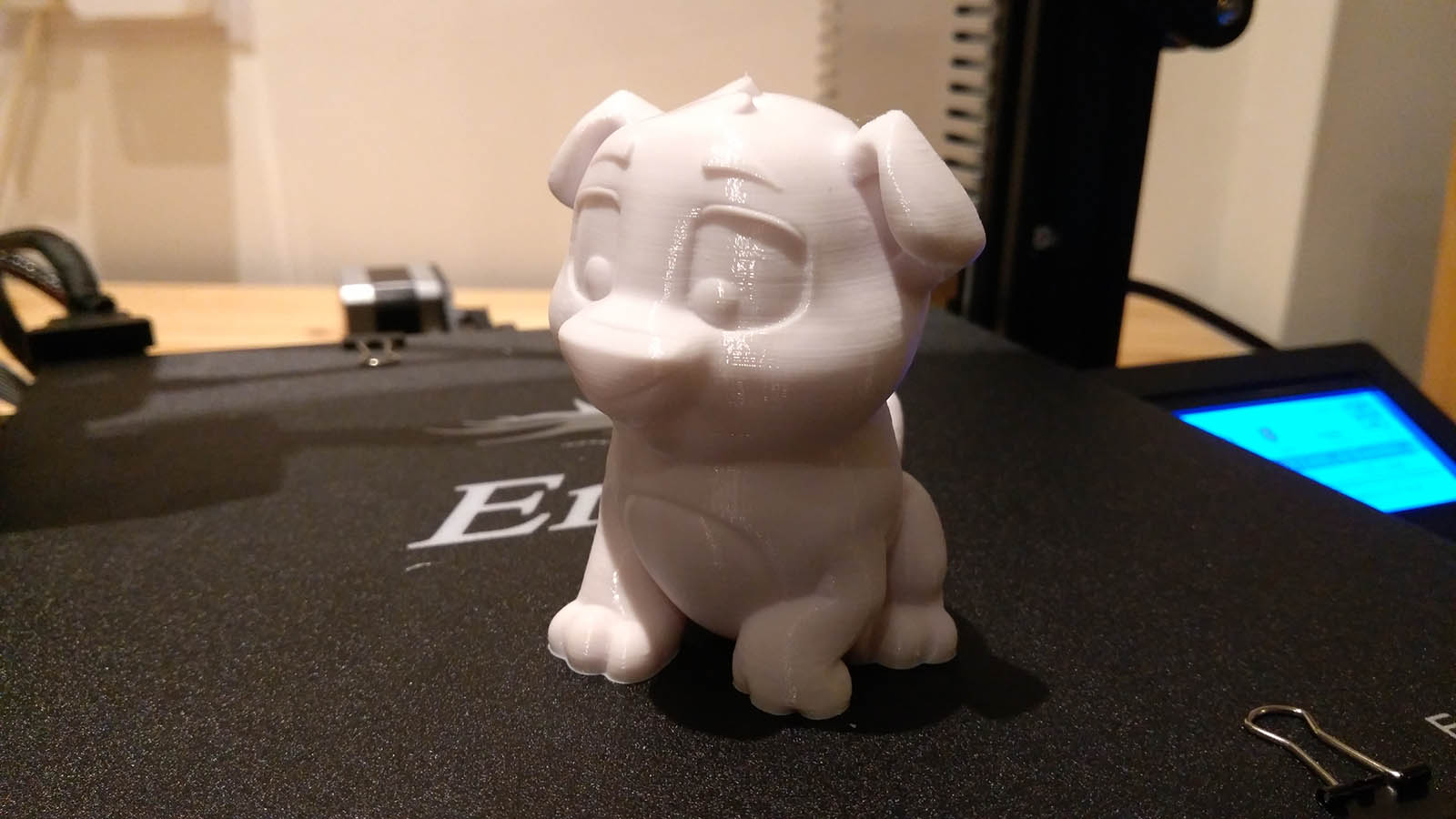
The G-code Dog included with the machine takes a whopping 5 hours 30 minutes to print, as it uses an especially slow print speed and layer height to show off the very best quality that the Ender 3 can achieve.
The 3DBenchy boat, a staple of the 3D printing world, took less than two hours with a 0.2mm layer height and no supports, and came off the bed almost perfect.
There are faster machines out there and even a few cheaper ones, but at this price, the Ender 3 has few, if any, serious competitors.
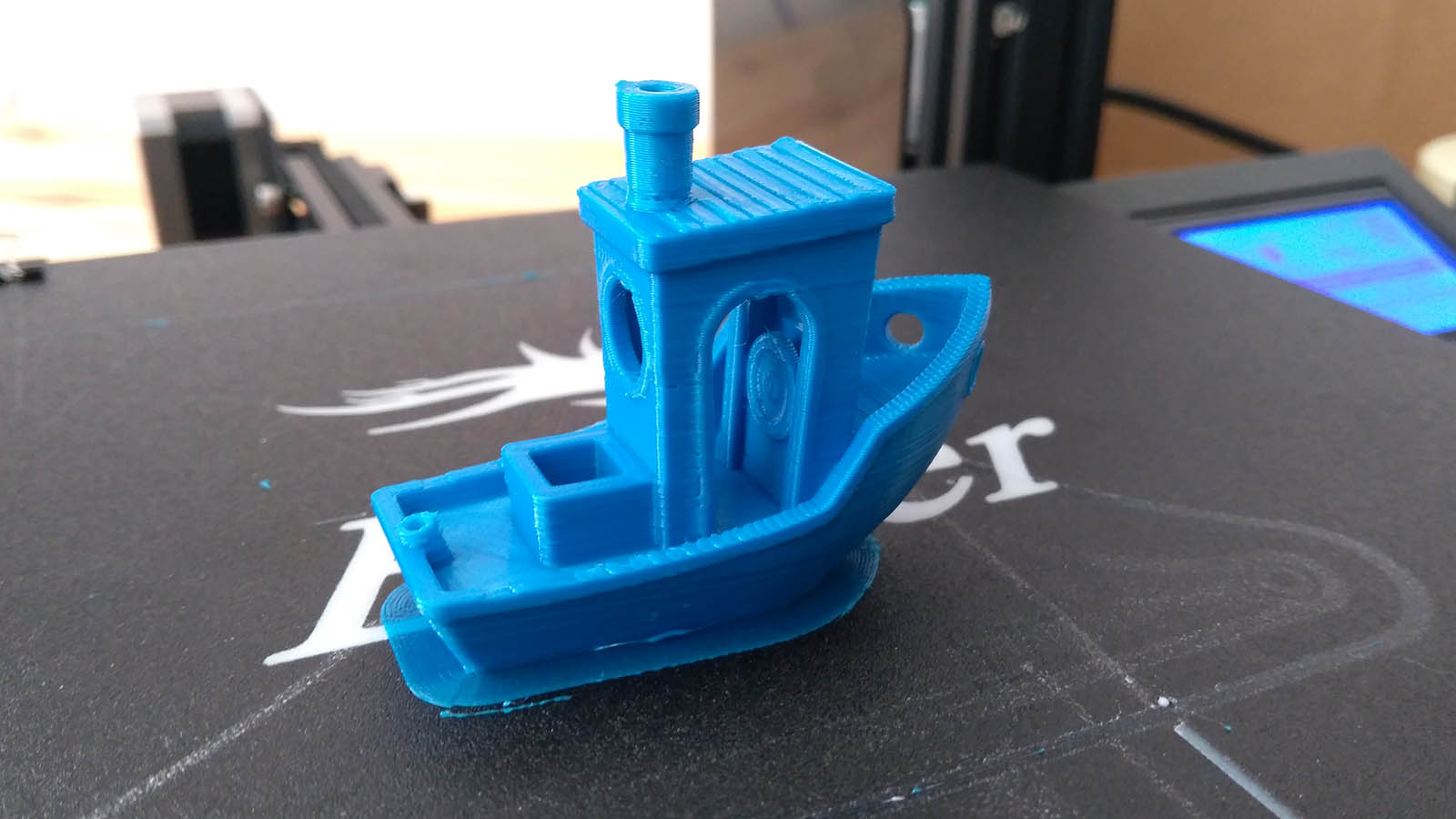
Running costs
How long is a piece of filament? The cost of PLA 1.75mm filament varies wildly, as does the quality of the product. You can pay anything from £10 ($13) to £30 ($49) for a 1kg reel of filament. Metallic, carbon fiber and wood particle infused PLA costs the most, should you fancy something exotic.
Helpfully, most slicers will approximate the weight of any object you print, and adjusting the level of infill could reduce filament use significantly.
As a general guide, the demo dog weighs just 35g, or roughly 33p (40 cents). That isn’t very cheap, but it is hardly expensive either.
A 1kg reel can make a large object or lots of smaller ones, and it is nice to have a selection of bright colors on hand. Based on our usage, we’d buy at least a couple of reels initially and add more different colors when you need them.
PET-G is more expensive, and indeed at least double the cost of the cheapest PLA. Although for those that need a small heat resistant part making, you can get small 250g or 500g reels of the stuff.
How much you end up spending on filament will be dictated by how addicted you become to 3D printing, and with a machine like the Creality Ender 3 around, we’d say that’s almost a certainty.
Final verdict
This is nothing short of a simply amazing device. The Creality Ender 3 makes high-quality 3D printing affordable in a way that it wasn’t just a year ago. 3D printing is still a steep learning curve to climb, but the latest Ender 3 is an excellent base camp from which you can start out on that adventure.
- Take a look at the best 3D printers of 2018
0 comments:
Post a Comment